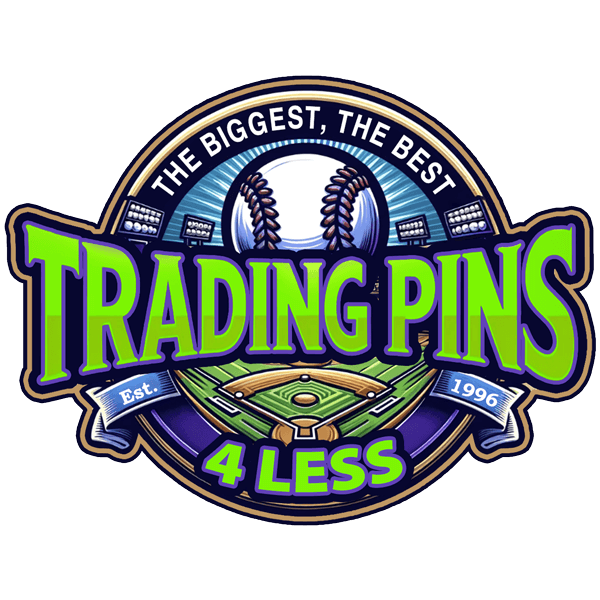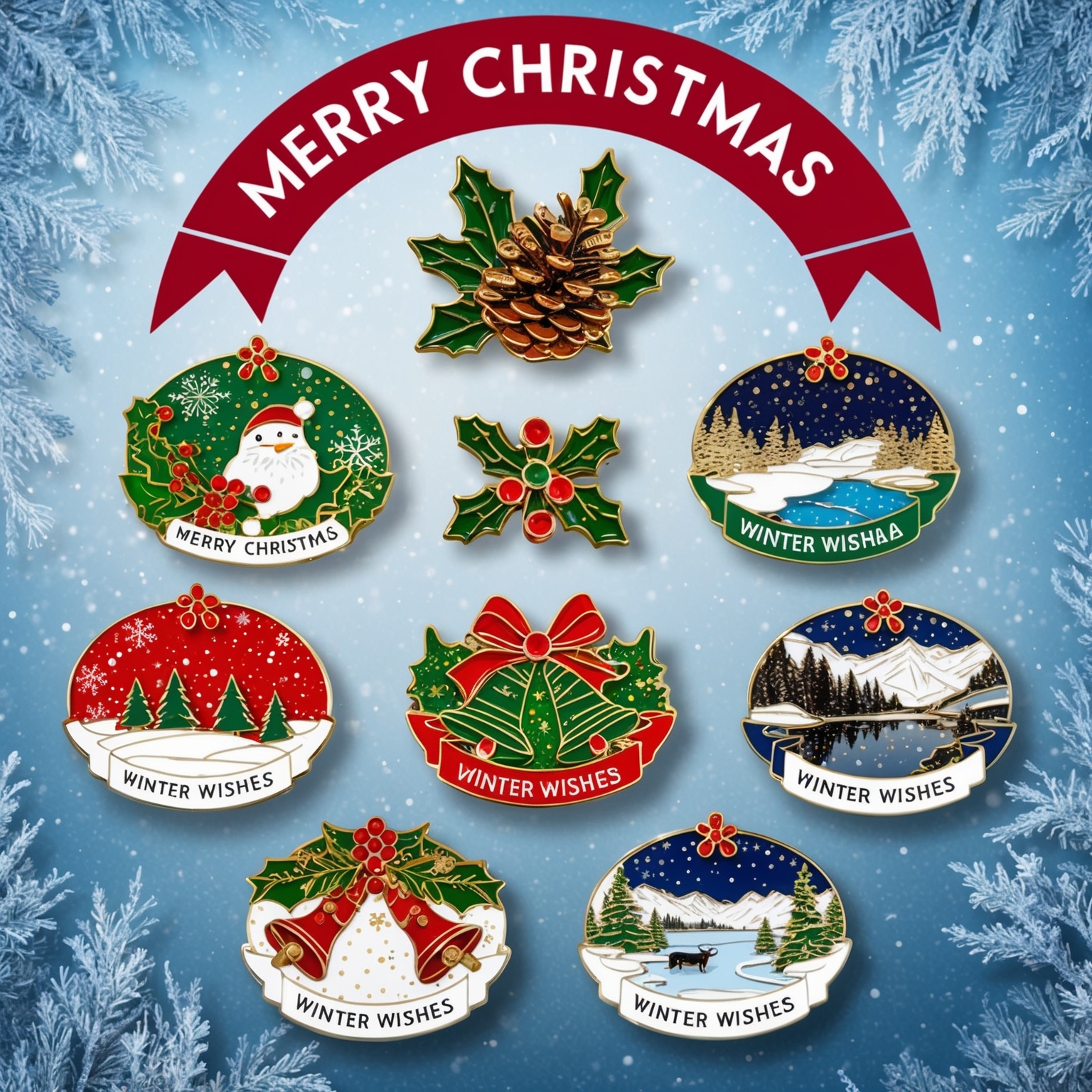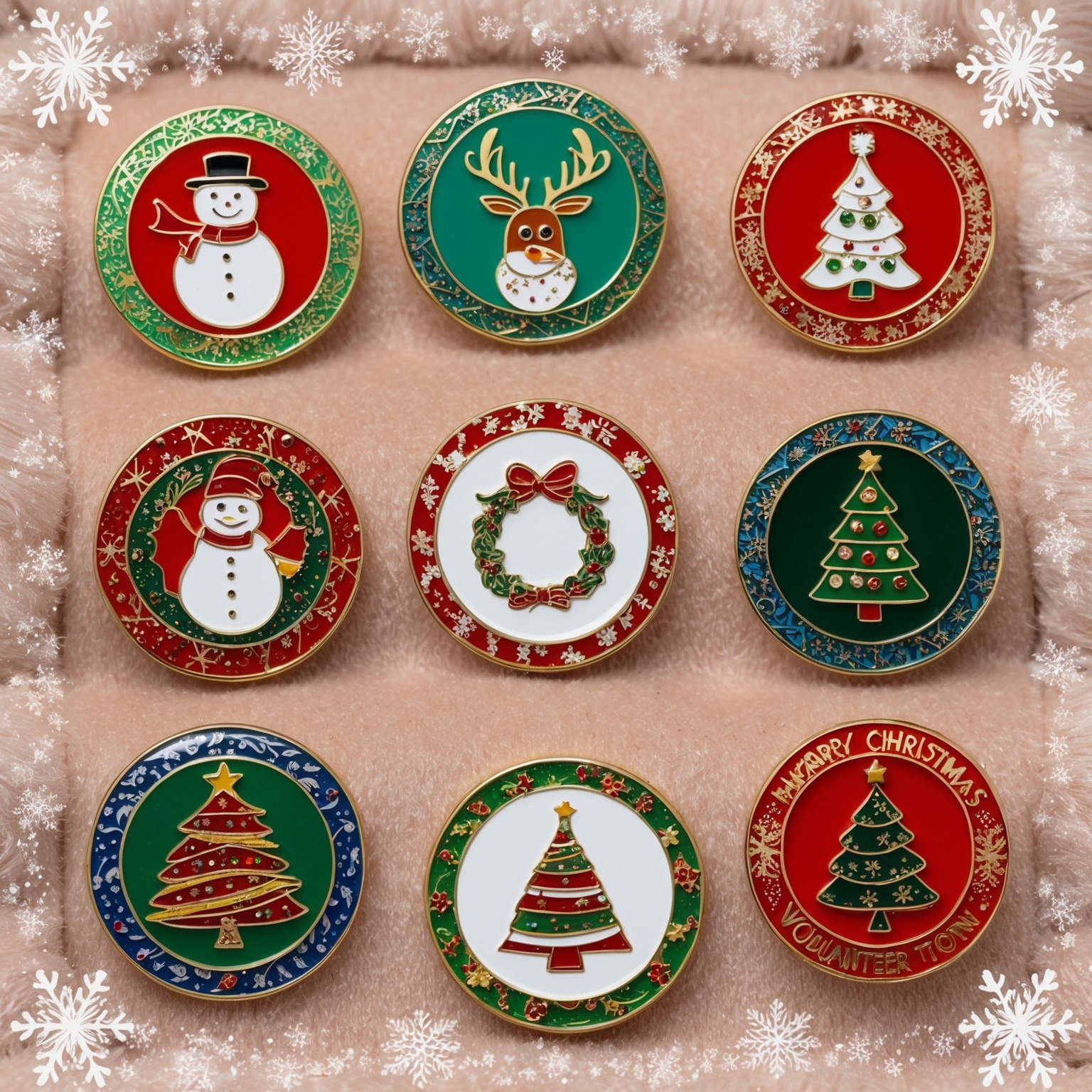Trading pins have become an iconic part of many cultures and events, symbolizing everything from sports team loyalty to treasured memories of travels and conventions. While trading pins as we know them today are largely a modern phenomenon, their origins can be traced back to ancient times. This article delves into the fascinating history of trading pins, exploring their evolution from ancient tokens to contemporary collectibles, and highlighting their significance across different periods and cultures.
Trading pins are small, often decorative items that carry significant meaning for collectors. They are exchanged, displayed, and collected as symbols of affiliation, achievement, or participation in events. While the modern practice of a trading pin is closely associated with sports, entertainment, and conventions, the concept of using small tokens or badges to represent identity or achievement has deep historical roots.
The history of a trading pin spans centuries and cultures, reflecting the evolving ways in which people express loyalty, commemorate events, and engage in social exchanges. From the ancient use of symbols and insignias to the creation of specialized pins for specific events and groups, trading pins have continually adapted to the needs and interests of different societies.
In this article, we will journey through the ages, exploring the origins and evolution of trading pins. We will examine their role in ancient civilizations, their development in the modern era, and their cultural significance in contemporary times. By understanding the rich history of a trading pin, we can appreciate the enduring appeal of these small yet powerful symbols.
Ancient Origins of Symbolic Tokens
The concept of using small objects to signify identity, rank, or achievement is not new. In ancient civilizations, various forms of symbolic tokens were used to convey information and signify membership in a group. While these tokens were not “trading pins” in the modern sense, they laid the groundwork for the use of small, portable symbols in social and ceremonial contexts.
Ancient Egypt
In ancient Egypt, symbols played a crucial role in religious and social life. The use of amulets, charms, and insignias was widespread, with each symbol carrying specific meanings. For example, scarab beetles were commonly used as amulets and were believed to offer protection and good fortune. These symbols were often made into small, wearable items that could be exchanged or given as gifts.
The practice of creating and wearing these symbolic items was closely tied to the Egyptian belief system and the importance of the afterlife. They were not only decorative but also served as protective talismans. The exchange or gifting of such items could signify friendship, respect, or shared beliefs, foreshadowing the social functions of a trading pin.
Ancient Greece and Rome
In ancient Greece and Rome, symbols and tokens were used in various aspects of life, including politics, military, and religion. Soldiers often wore insignias that indicated their allegiance, rank, or accomplishments. These symbols were displayed on armor, shields, and clothing, serving as a means of identification and a source of pride.
For example, Roman soldiers were awarded phalerae, small metal discs that were often worn on the chest and signified bravery or achievement in battle. These items were highly valued and could be displayed as part of a soldier’s attire, similar to how modern a trading pin are worn to showcase achievements or affiliations.
In both Greek and Roman societies, the use of symbolic tokens extended to civic and religious events. Participants in religious festivals or civic ceremonies might receive small tokens or badges as a sign of participation or honor. These items could be kept as mementos or exchanged as a gesture of goodwill.
Medieval Europe
During the medieval period, the use of badges and insignias continued to evolve. Heraldic symbols became prominent, with families and individuals displaying coats of arms on clothing, shields, and banners. These symbols served as identifiers and were often used in tournaments, battles, and courtly events.
Pilgrims traveling to religious sites often wore badges that identified their pilgrimage. These badges were typically made of metal and featured religious symbols or imagery associated with the pilgrimage site. Pilgrims collected these badges as souvenirs and wore them on their clothing or hats as a sign of their journey and devotion.
The medieval use of badges and insignias as symbols of identity, affiliation, and achievement laid the foundation for the modern concept of a trading pin. While these items were not traded in the same way as contemporary pins, they shared the purpose of representing personal or group identity and commemorating significant events.
The Emergence of Modern Trading Pins
The modern concept of a trading pin, as small, collectible items exchanged among enthusiasts, began to take shape in the late 19th and early 20th centuries. This period saw the rise of organized sports, world expositions, and international events, all of which contributed to the popularity and standardization of trading pins.
The Olympics and the Birth of Trading Pins
The modern Olympic Games, revived in 1896, played a significant role in popularizing trading pins. Athletes, officials, and spectators began exchanging small badges or pins as a way to commemorate their participation and show support for their countries. These early Olympic pins were often simple metal badges featuring national flags, event logos, or sport symbols.
The practice of trading Olympic pins quickly became a tradition, with athletes and fans eagerly seeking to collect pins from different countries and events. The 1980 Winter Olympics in Lake Placid marked a turning point in the popularity of pin trading, as the event featured a dedicated pin trading center and widespread media coverage of the phenomenon. Since then, pin trading has become an integral part of the Olympic experience, with official pins produced for each event, sport, and country.
World Expositions and Fairs
World expositions and fairs, which showcased the achievements and cultures of different nations, also contributed to the rise of trading pins. These events often produced commemorative pins that visitors could purchase or receive as souvenirs. The 1933 Chicago World’s Fair and the 1964 New York World’s Fair, for example, featured a wide variety of pins representing different pavilions, attractions, and participating countries.
These pins served as tangible reminders of the event and allowed visitors to collect a piece of the experience. The practice of collecting and trading these pins helped spread the idea of trading pins as a fun and meaningful hobby.
The Rise of Sports Trading Pins
In addition to the Olympics, other sports events and organizations began producing trading pins. Baseball, in particular, played a significant role in the development of sports trading pins. Major League Baseball (MLB) teams started creating pins featuring team logos, mascots, and memorable moments. Fans and collectors eagerly sought out these pins, which became popular items at ballparks and fan conventions.
Little League baseball also embraced trading pins, with teams creating custom pins for tournaments and events. The Little League World Series, held annually in Williamsport, Pennsylvania, became a major hub for pin trading, with teams and fans exchanging pins as a symbol of camaraderie and sportsmanship.
The tradition of trading pins extended to other sports, including hockey, soccer, and basketball. Teams, leagues, and events across various sports began producing pins, each reflecting the unique identity and spirit of the sport.
The Golden Age of Pin Trading
The late 20th century and early 21st century marked a golden age of pin trading, with the practice spreading beyond sports and expositions to include a wide range of events and communities. The rise of theme parks, conventions, and fan clubs further fueled the popularity of trading pins.
Disney Pin Trading
One of the most influential developments in the history of trading pins was the launch of Disney Pin Trading in the late 1990s. Disney introduced the concept at its theme parks, offering a wide variety of collectible pins featuring beloved characters, attractions, and events. Guests could purchase pins and trade them with cast members and other guests, creating an interactive and engaging experience.
Disney Pin Trading quickly became a global phenomenon, with thousands of pins produced each year and dedicated pin trading events held at Disney parks around the world. The popularity of Disney pins extended beyond the parks, with online communities, auctions, and trading forums emerging to support the hobby. Disney pins range from open-edition designs to limited-edition releases, making them highly sought after by collectors.
Pop Culture Conventions and Fan Clubs
The rise of pop culture conventions, such as San Diego Comic-Con, has also contributed to the popularity of trading pins. These events, which celebrate movies, TV shows, comics, and other aspects of pop culture, often feature exclusive pins created specifically for the convention. Attendees collect and trade these pins, often seeking rare or limited-edition designs.
Fan clubs and communities dedicated to specific franchises or interests have also embraced trading pins. For example, Star Wars, Star Trek, and Harry Potter fan clubs produce pins that reflect the characters, symbols, and lore of their respective universes. These pins are often traded at fan events, conventions, and online, creating a vibrant subculture of pin collectors.
Corporate and Promotional Pins
Beyond entertainment and sports, trading pins have become a popular promotional tool for businesses and organizations. Companies create custom pins for branding, marketing campaigns, and employee recognition. These pins often feature company logos, slogans, or mascots and are distributed at trade shows, corporate events, and product launches.
Promotional pins are not only a cost-effective marketing tool but also serve as a tangible representation of a brand. They can be collected, worn, and shared, helping to spread brand awareness and create a sense of community among employees and customers.
The Digital Age and the Future of Trading Pins
As the world becomes increasingly digital, the practice of trading pins has adapted to new technologies and platforms. The internet has transformed the way collectors connect, trade, and acquire pins, while innovations in design and manufacturing continue to expand the possibilities for trading pins.
Online Communities and Marketplaces
The advent of the internet has revolutionized the trading pin community. Online forums, social media groups, and dedicated websites provide platforms for collectors to connect, share information, and trade pins. Websites like eBay and Etsy offer marketplaces where collectors can buy and sell pins from around the world, making it easier than ever to find rare or specific designs.
Online communities have also become hubs for sharing knowledge about pin authenticity, production, and history. Collectors can access databases and resources to verify the legitimacy of pins and learn about different series, editions, and variants. The internet has democratized the hobby, making it accessible to a wider audience and fostering a global community of pin enthusiasts.
Innovations in Design and Manufacturing
Advances in design and manufacturing technology have expanded the creative possibilities for trading pins. Modern pins can feature intricate details, vibrant colors, and innovative elements such as glow-in-the-dark finishes, spinning parts, and interactive features. Digital design tools allow artists to create complex and unique pin designs, while improvements in production techniques ensure high-quality results.
Custom trading pins have become increasingly popular, with businesses, organizations, and individuals commissioning pins for special events, celebrations, and personal projects. The ability to create bespoke pins allows for greater expression and personalization, making trading pins a versatile and meaningful medium.
The Future of Trading Pins
As trading pins continue to evolve, they remain a beloved and enduring collectible. The future of trading pins will likely see further integration with digital technologies, such as augmented reality (AR) and non-fungible tokens (NFTs). AR could allow collectors to interact with their physical pins in new ways, such as displaying additional information or animations. NFTs could offer a digital counterpart to physical pins, providing a secure and verifiable way to collect and trade digital art.
Despite the rise of digital collectibles, the tactile and tangible nature of physical trading pins continues to hold a special appeal. The act of holding, wearing, and trading pins creates a personal connection that digital items cannot replicate. As long as people seek to commemorate experiences, express their interests, and connect with others, trading pins will continue to thrive as a cherished and meaningful hobby.
Conclusion
Trading pins have a rich and varied history that spans cultures, events, and communities. From the symbolic tokens of ancient civilizations to the collectible pins of the modern era, these small items have served as powerful symbols of identity, affiliation, and memory. The practice of trading pins has evolved over time, adapting to new technologies, cultural trends, and social contexts.
Today, a trading pin are more than just collectibles; they are a way for people to express their passions, celebrate shared experiences, and connect with others. Whether collected as souvenirs, worn as badges of pride, or traded as tokens of friendship, trading pins continue to hold a special place in the hearts of enthusiasts around the world.
As we look to the future, the enduring appeal of trading pins is evident. They remain a versatile and meaningful medium for storytelling, branding, and personal expression. By understanding the history and significance of trading pins, we can appreciate the depth and richness of this beloved hobby and look forward to the new and exciting possibilities it holds.
If you are interested in buying high quality custom trading pins, you can call us at 1-800-641-1299 or fill out a FREE quote form.







